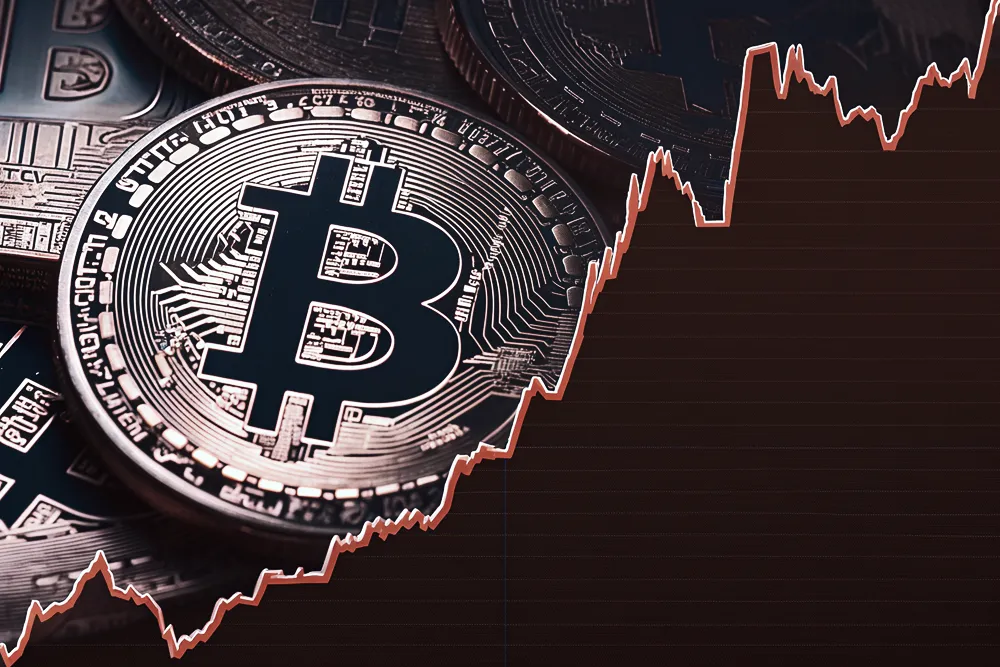Original Author: Miles Deutscher
Original Compilation: Deep Tide TechFlow
The 4-year cycle has ended. We are entering a new paradigm in cryptocurrency—survival of the fittest, elimination of the unfit.
Here are my strategies for navigating market changes in 2025 to continue accumulating wealth in uncharted territory.
Before sharing my strategies, let’s first explore why the 4-year cycle has become a thing of the past.
I believe there are two reasons why the 4-year cycle is no longer applicable.
- Diminishing Halving Effect
First, from the supply side, the halving effect of Bitcoin ($BTC) is gradually weakening.
With each halving, the reduction in the issuance of new Bitcoins is becoming smaller.
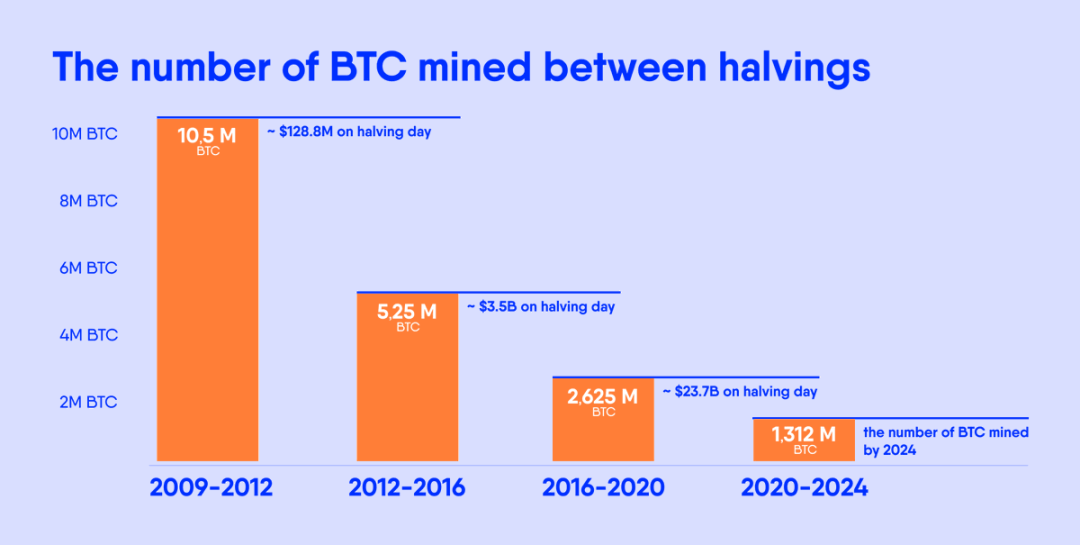
For example, the halvings in 2012 and 2016 saw reductions of 50% and 25% in issuance, respectively, which had a significant impact on market prices.
However, by 2024, the reduction in issuance due to halving is only 6.25%. This means the price-driving effect of halving is no longer what it used to be.
- ETFs Changed the Market Rules
Secondly, from the demand side, the launch of Bitcoin ETFs is a significant variable that has permanently changed the market rules.
Bitcoin ETFs are financial instruments that allow traditional market investors to indirectly invest in Bitcoin.
Since their launch, they have become the most successful ETF products in history, with demand far exceeding expectations.
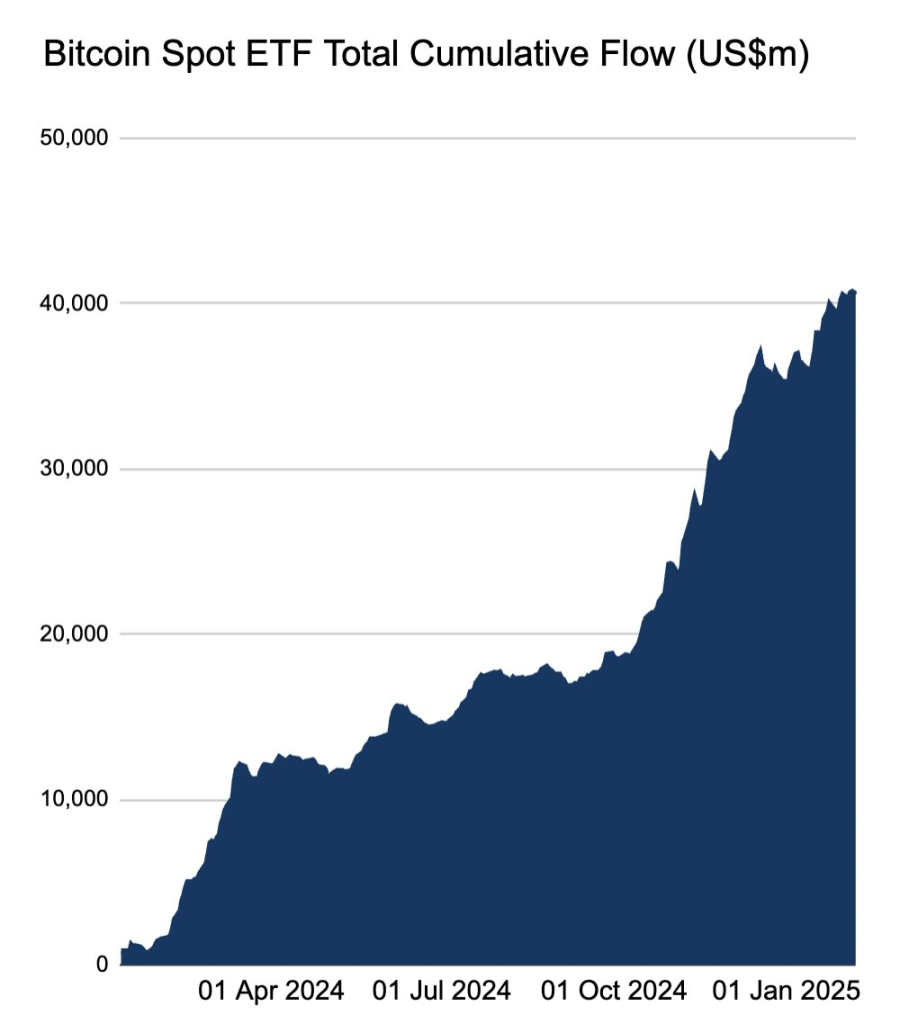
This influx of demand has not only changed the overall landscape of the crypto market but has also broken many old market rules (such as the 4-year cycle).
The biggest impact of ETFs is reflected in the altcoin market. Let me elaborate.
In the past, you might often see a chart showing the price rotation relationship between Bitcoin and altcoins. This was indeed true in 2021.
But now, this relationship has broken down.
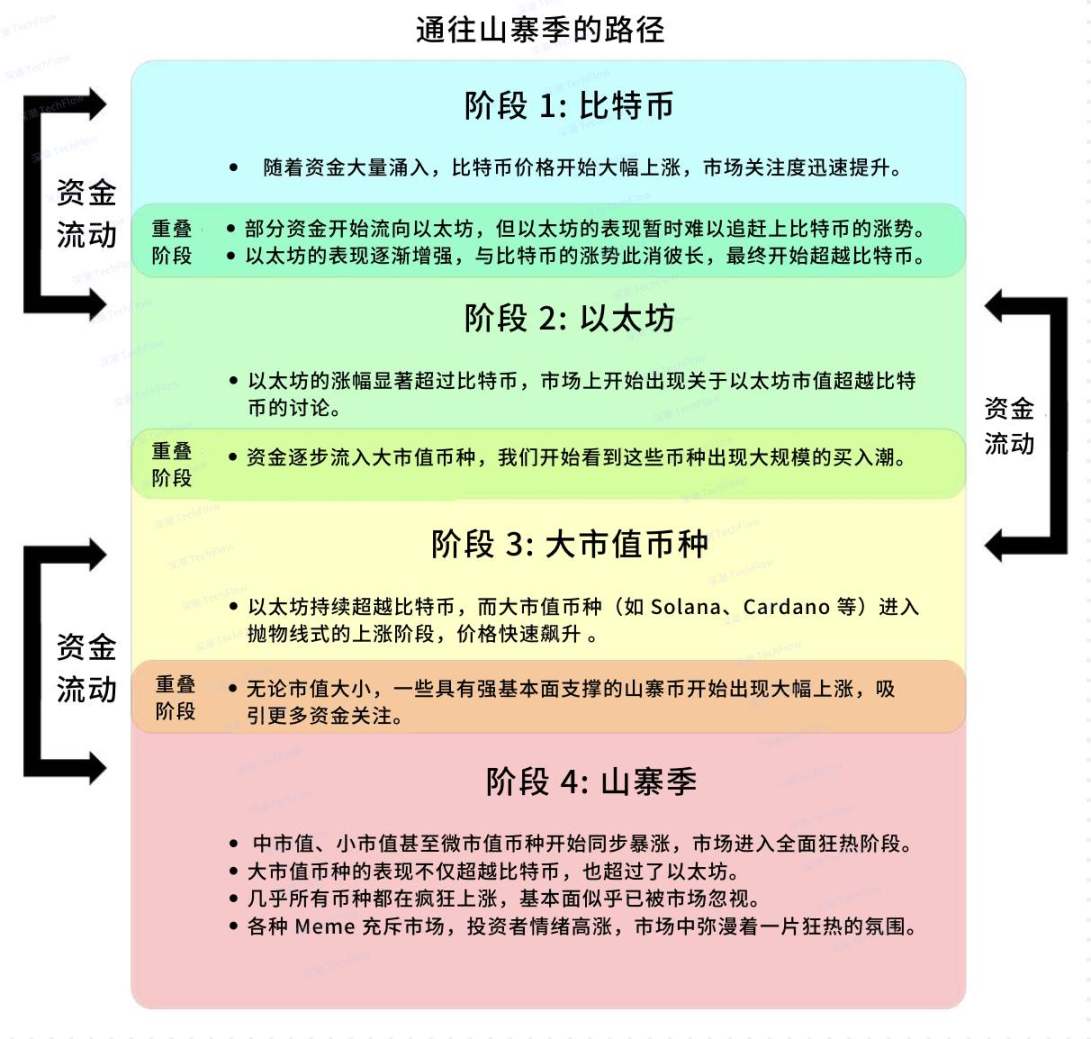
Original image from Miles Deutscher, compiled by Deep Tide TechFlow
The Wealth Effect of Bitcoin Disappears
In 2017 and 2021, when Bitcoin prices rose, many wealthy Bitcoin whales would transfer profits into altcoins on centralized exchanges (CEX), thus driving the prosperity of the altcoin market.
However, now most new funds are entering the market through Bitcoin ETFs, and these funds are not flowing into the altcoin market.
In other words, the way funds flow has fundamentally changed, and altcoins no longer benefit from the wealth effect of Bitcoin.
Retail Investors Skip Stage 2 (ETH) and Stage 3 (Mainstream Coins)
Retail investors have directly flocked to high-risk speculative projects on-chain, known as "on-chain casino games" (Pump Fun).
Compared to 2021, the number of retail investors in this cycle has significantly decreased. This is mainly due to the pressures of the macroeconomic environment and the severe impacts many faced in the last cycle due to events like LUNA, FTX, BlockFi, and Voyager.
However, those retail players who remain in the market have directly skipped mainstream coins and chosen to seek opportunities on-chain.
You can read my detailed analysis of how this phenomenon affects the market here.
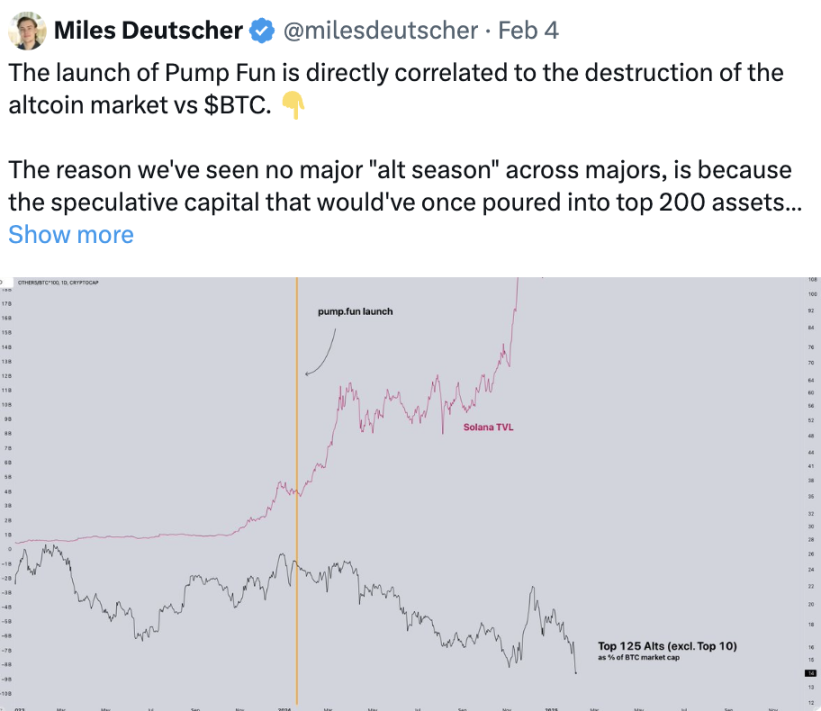
If my judgment is correct, meaning that cycle theory is no longer applicable, what changes will this bring to the future market?
I have one piece of bad news and one piece of good news to share.
The bad news is: it has become harder to "make money while lying flat." This is a natural signal of the industry's gradual maturation.
In fact, there are now more trading opportunities in the market, but if you continue to use strategies from 2021—such as holding a bunch of altcoins and quietly waiting for the "altcoin season" to arrive—you may be disappointed or even perform poorly.
The good news is: since there is no longer a so-called four-year cycle, this also means that prolonged bear markets triggered by specific factors in cryptocurrency will no longer occur. Of course, from a macroeconomic perspective, long-term bear markets are still possible, as cryptocurrencies do not operate in isolation, and their correlation with the macroeconomy is now tighter than ever.
The market's "risk appetite periods" and "risk aversion periods" are more likely to be driven by changes in macroeconomic conditions. These changes often trigger short-term mini echo bubbles, rather than sustained months of one-sided upward trends. The so-called echo bubbles refer to short-term market rebounds brought about by changes in the macro environment, which, although smaller in scale, bear similarities to past large bubbles.
Within these bubbles, there are plenty of opportunities to make money.
For example, in 2024, we witnessed rotations of different hot topics: November was the meme craze, December was the AI concept, and January was about AI agents. Undoubtedly, new trends will emerge next.
If you are sharp enough, these are excellent opportunities to make money, but they require a strategy that is slightly different from past cycles.
This leads to what I want to discuss next: my strategy.
A few days ago, I had dinner with @gametheorizing, who made a very insightful point.
Many people are pursuing an ultimate goal: whether it’s to multiply their portfolio by 5, 10, or even 20 times.
But in fact, a better strategy is to focus on multiple small bets rather than going all in. By continuously accumulating a series of small victories, this approach may yield greater returns in the long run.
Therefore, instead of betting everything and hoping for the altcoin season to quickly double your assets, try to accumulate wealth continuously through the compounding effect of time.
Specifically, you can adopt the following strategy:
Small bets > Take profits, re-bet > Take profits again, and repeat.
This is also why many top traders and thinkers in the crypto space (like Jordi) were once professional poker players. They learned to view each trade through the lens of probability, assessing possible outcomes rather than betting blindly.
My portfolio is currently allocated as follows:
50% invested in long-term bullish high-conviction assets, 50% in stablecoins and active trading. I will use this portion of funds to seek short-term opportunities in the market, flexibly entering and exiting.
Additionally, I use stablecoins as a benchmark for measuring the success or failure of trades. Each time I exit a trade, I convert profits back into stablecoins, allowing me to clearly see my earnings.
If your cryptocurrency portfolio is too diversified and you don’t know how to respond to current market changes, last week I shared a guide detailing how to optimize your portfolio based on market changes.
In this article, I emphasized a key point: the importance of setting "invalidating" (INVALIDATION) standards for each trade. Just as you need a clear reason to validate (VALIDATION) your choice when deciding to purchase a certain cryptocurrency, "invalidating" refers to the standards for exiting a trade when market conditions no longer meet your expectations.
I’ve noticed that many people enter trades without basic risk management awareness and without setting clear exit standards. This often leads to unnecessary losses.
If you want to take a step that can significantly enhance your future profitability, it is to establish clear technical or fundamental "invalidating" standards for each trade. This will not only help you manage risk better but also improve the overall efficiency of your trading.
Of course, your level of confidence in a trade and your expected holding time may influence how you set the "invalidating" standards or trigger conditions. But in any case, this does not change the fact that you need to plan ahead. Having a clear exit plan is one of the keys to successful trading.
Although the current market may not fully adhere to past cyclical patterns, I remain optimistic about the future. As long as you maintain the right mindset and strategy, 2025 still holds the potential for significant growth.
Currently, we are in a bear market phase, but market trends will eventually change, bringing many new opportunities. Before that, your primary goal is to survive.
The returns in the cryptocurrency market often belong to those who can endure through extreme volatility. Regardless of how the market fluctuates, patience and resilience are the keys to ultimate victory.
免责声明:本文章仅代表作者个人观点,不代表本平台的立场和观点。本文章仅供信息分享,不构成对任何人的任何投资建议。用户与作者之间的任何争议,与本平台无关。如网页中刊载的文章或图片涉及侵权,请提供相关的权利证明和身份证明发送邮件到support@aicoin.com,本平台相关工作人员将会进行核查。
